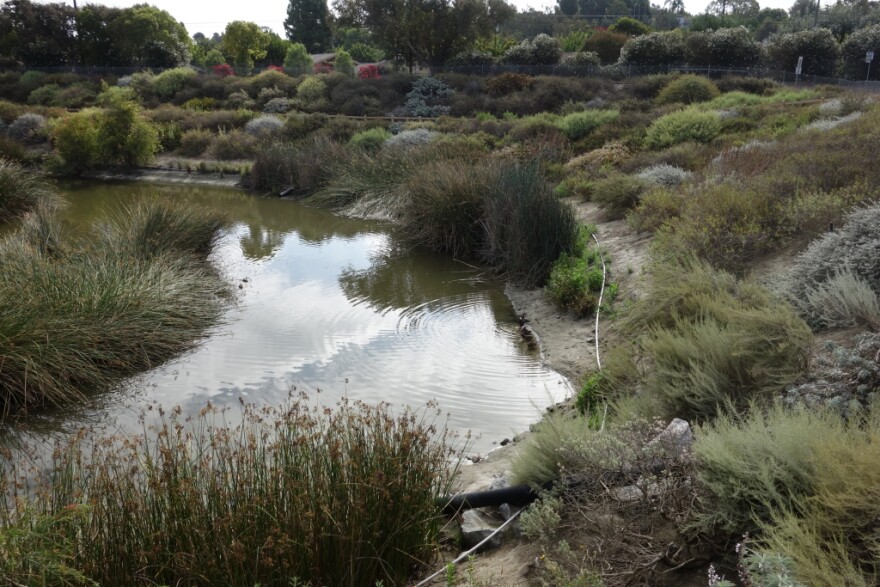Truth matters. Community matters. Your support makes both possible. LAist is one of the few places where news remains independent and free from political and corporate influence. Stand up for truth and for LAist. Make your year-end tax-deductible gift now.
Why So Much Stormwater Is Still Winding Up In The Ocean In LA

The drought continues, despite the wet the weather earlier this week.
For decades, L.A. sent most of its stormwater to the ocean, with little of it being captured for use. But the climate crisis is forcing a paradigm shift.
L.A. gets most of its water from the snow that falls in the Sierra Nevada mountains. It melts into reservoirs, then is piped hundreds of miles to Southland cities.
But the climate emergency is making snow a decreasingly reliable source of water. Climate models suggest as much as 65% of that snowmelt could be lost by the end of the century.
That’s why we’ll need to capture more rainfall at a local level, said Mark Pestrella, director of L.A. County Public Works.
“If we can capture more of our own water, we'll be less dependent upon the state water system, or what we call imported water,” Pestrella said.
He said in this week’s storm alone, L.A. captured 1.8 billion gallons of water, enough to serve nearly 45,000 people for a year. Much of the rain was diverted to spreading grounds — ponds that collect the water and allow it to seep into the ground to refill underground aquifers.
“The key is, we're trying to divert it before it gets into the L.A. River and the San Gabriel rivers as much as we can,” he said.
The legacy of groundwater contamination in the L.A. Basin is the main challenge, limiting underground storage space for new rainfall there, Pestrella said.
“We don't have a place to store the water currently,” Pestrella said. “That’s the problem.”
About half of the water that fell this week went to the L.A. River and ended up in the ocean, he said. On the San Gabriel side, however, only 5% of the water that fell this week ended up in the ocean. Pestrella said that’s because that watershed has more storage space.
Through its system of 27 spreading grounds and 14 reservoirs and dams, the county currently catches an average of about 82 billion gallons of water per year, Pestrella said. The goal over the next 30 years is to double that number, providing nearly two thirds of the county’s drinking water needs, Pestrella said.
“The model for L.A. County says that we're going to see the same amount of water, but we're going to see it less frequently with a higher intensity, which is kind of scary,” Pestrella said. “Because that means our water is going to come sort of all at once.”
Expanding that system, as well as implementing smaller, localized stormwater capture programs will be essential as the climate crisis changes traditional weather patterns, he said.
In 2018, L.A. County voters approved Measure W, a tax to fund more stormwater capture programs across the county. So far, more than a billion dollars has been generated. It’s primarily gone to improving water quality around the region and upgrading existing stormwater infrastructure.








